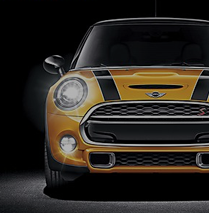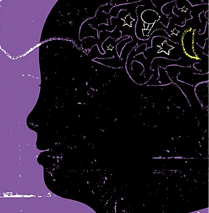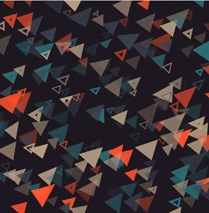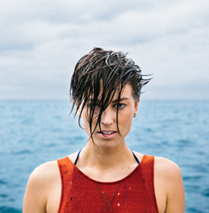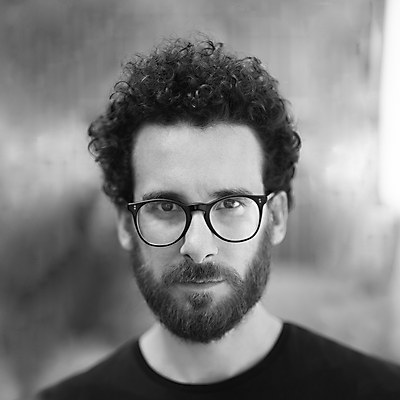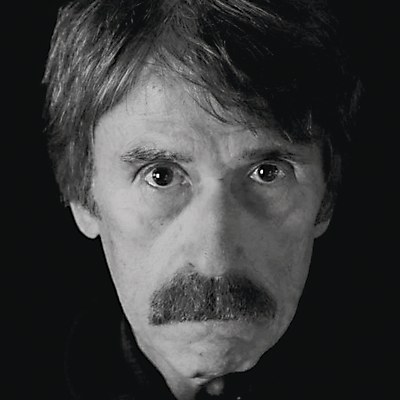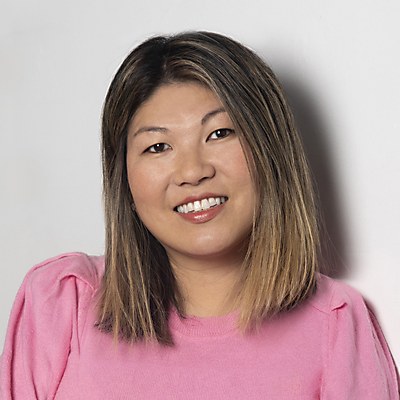How did you discover you wanted to be a designer? I have been an artist for as long as I can remember. My favorite projects in school were the ones that you could execute with colored pencils. I created T-shirt art for every event and did all the custom-crafted decor and signage for every function. I got so much satisfaction from the experience of creating, but more importantly, the reaction that people had to things I would make. People loved my art, and I loved that it made them happy. Graphic design is just art that fits a brief. That is how I knew I needed to create art and design for a living.
What led you to accept a job at the Denver-based ad agency Cactus, and what do you do in your role there as design director? I’m a native of the Denver area and love everything about the Colorado lifestyle. I had left for college and bounced around the country for two decades, but I always wanted to settle back in this area. A position opened for a senior designer at Cactus, and the rest is happy history. Currently, I lead the in-house design and production teams, focusing on branding and everything design for traditional and digital advertising.
How do you feel about the term brand system as opposed to brand language? Brand system sounds so engineering. System literally means “a set of things working together as parts of a mechanism or an interconnecting network.” And while that is true, a brand is a set of interconnected elements working in concert. I prefer the definition “a system of communication used by a brand to convey a set of values, ideas and offerings.” I like the metaphor of visual elements flexing and flowing in the world as if it is an arrangement of words communicating a set of ideas to those who encounter it.
There is also something fluid about language. Words, expressions and slang, among other things, change based on context and time. I think a brand should do the same. A brand shouldn’t function only as a rigid framework. Yes, consistency is important, but brands should be free to flex to stay relevant in context and over time. I like to approach identity design accordingly. Instead of creating a set of rigid elements that fit together as one fixed mechanism, I create a toolkit of flexible visual elements that can adapt to their situations and have the flexibility to communicate to their audiences appropriately.
What have been some of your favorite campaigns to work on, and what did you take away from them? Art directing and designing the latest Arapahoe Basin ski resort campaign has been amazing. It’s refreshing to build work for a client unafraid of pushing boundaries and authentically being themselves. On the branding side, one of the hardest and most rewarding projects was redesigning the SketchUp family of 3-D design software products. We had to create a set of unique symbols with strong conceptual relevance to their product functions that had to be both accurate in 3-D and striking and recognizable in 2-D, and I’m proud of the result.
At Cactus, you oversee campaigns that extend to diverse media, including print, television, web and app design, and illustration. How do you find your approach changing when working with different media? I love having a new challenge each time I’m briefed on a project. My approach doesn’t change, per se; it’s more about the importance of having a deep understanding of the practical aspects and limitations of each medium and using the process that works for you as a designer, tailored to that medium. Best practices guide the ultimate solution, but the creative process works the same way.
How do you see digital media changing the game for designing visual languages or requiring additional flexibility in branding design? In some ways, moving to a digital-first approach to identity design has made things easier. I no longer have to sleep with a Pantone book under my pillow. Color matching and other technical aspects of print are not as important. Designing on a screen in RGB, what you see if what you get. The playground we build as digital artists is the arena where the work will ultimately live. And since I love being able to bend and flex and rearrange brand elements in the language to meet any given communication output, the need for responsive, real-time design and adaptation is something that I think about instinctually when developing visual languages.
Where do your best ideas come from? There are two important aspects of my process. One, rabbit-holing on Pinterest, Behance, Dribble and other inspirational sources. I love looking at design trends and poking around the internet to see what people are doing in the design world. It is so much fun to see a technique or element that becomes the seed I can build something brand new from. I also like to stew on ideas. Go for a walk or a bike ride or just drive in the car and almost meditate on a concept or challenge. Some of my best conceptual ideas float up when I take quiet time to listen to them.
What is the biggest challenge currently facing designers? It’s probably very similar to the problem for all creatives: coming up with something fresh, unique and compelling that doesn’t feel derivative, and being able to sell those solutions that make a client uncomfortable.
What designers or design firm other than yours do you most admire and why? I take a democratic approach to who and what inspires me. I’m not sure if it’s necessarily a good or bad thing, but I have never been the kind of person who fans out over specific shops or individuals. I would probably have to credit Keith Haring for most heavily influencing my style and enthusiasm as a young designer. To this day, I love bright, bold, uplifting, playful approaches and aesthetics. But I guess I would also have to say Richard Turley: the F1 rebrand is my all-time, hands down favorite brand identity.
Do you have any advice for people just entering the profession? Develop a process that works for you. I had a mentor early on in my career that stressed the process. Also, for me, embracing techniques, habits and means of creative exploration that I previously hadn‘t employed literally changed my career. My capabilities and consistency as a designer grew by bounds. It doesn’t have to be rigid or formal. Just find the ways that work for you to discover new great ideas and solutions. ca


